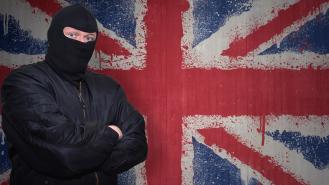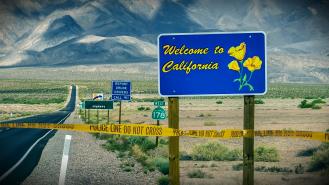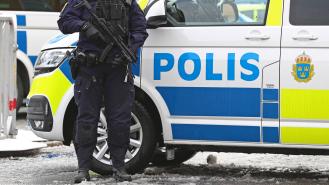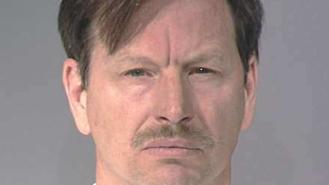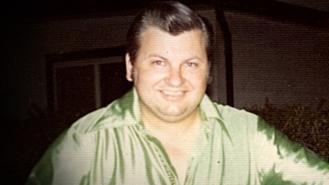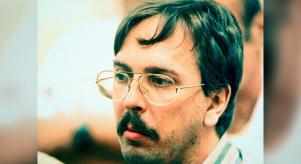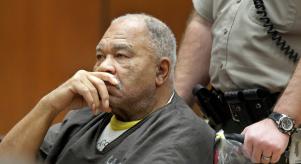
Richard Kuklinski 'The Iceman': A stone-cold killer
In the annals of American murderers, Richard Kuklinski – better known as 'The Iceman' – ranks among the most mysterious. For one thing, we still don’t know just how many people he slaughtered. While he was officially convicted of 'only' five killings, Kuklinski claimed to actually have a body count in the triple digits. The extent of his criminality is also a matter of debate. While most true crime experts agree he was very likely a small-fry thug with a psychopathically murderous streak, much of his notoriety rests on an alleged career as a Mafia hitman connected to major figures in the New York underworld.
The reason for all the hazy uncertainty is Kuklinski himself, and his habit of telling tall tales about his criminal career. Did he really shoot a random passer-by in the head with a crossbow just to test it out? Were some of his victims really eaten alive by rats while he watched and filmed the carnage? As his own biographer once said to him, 'Richard, I have a feeling if I listen to you long enough, you'll tell me you shot President Lincoln.'
So what do we know about Kuklinski for certain? Well, he had an incredibly traumatic upbringing in New Jersey at the hands of his physically abusive parents. His binge-drinking father was particularly vicious, actually murdering Richard’s seven-year-old brother Florian in a sustained, drunken assault. (Richard later claimed to have taken his first life when he was just a teenager, killing a local bully. This was just the first of a staggeringly long litany of crimes he confessed to.)
We also know that the adult Kuklinski led a double life. On the surface he was a doting husband and father, regularly lavishing his wife and kids with expensive gifts, and whisking them away to holiday spots like Disney World. When one daughter was ill in hospital, Kuklinski even turned up as Santa Claus to cheer up the kids on the ward. But, in contrast to this 'Good Richie' there was 'Bad Richie' – a volatile, angry, explosively violent presence who would beat his wife, smash furniture and emotionally abuse his children. 'I was late coming home once,' daughter Merrick later recounted, 'and he took [my dog] and broke her neck.'
'Bad Richie’s' propensity for violence went well beyond the walls of his home. Without his family realising, he had established a modest criminal enterprise making and distributing bootleg copies of films, from Disney blockbusters to pornography, as well as working alongside other criminals to steal cars and carry out burglaries. A looming, 6ft5 giant of a man, Kuklinski used his stature to intimidate and dominate the men he worked with. He also murdered them.
In Kuklinski’s world, there was no honour among thieves. He shot one associate to death after an argument got heated – Kuklinski then calmly cut the tendons in the corpse’s legs so he could be stuffed into a chemical drum. Another of his verified victims was a shady pharmacist who met with Kuklinski thinking he was going to buy a large quantity of stolen pharmaceuticals. Kuklinski shot him the face, then beat the injured man to death before taking the money and disposing of the corpse in a drum filled with cement.
A particularly brutal killing involved feeding a fellow thief a hamburger laced with cyanide, then having him throttled with a lamp cord when the poison didn’t kick in quickly enough. Still another victim was a man who brought close to $100,000 to Kuklinski, thinking he was going to buy a vast number of black videotapes. He was promptly killed and his body was stashed for years in a freezer – this was what earnt Kuklinski his nickname, 'The Iceman'.
These murders eventually drew the attention of a New Jersey task force which embarked on an elaborate sting operation to snare Kuklinski. Posing as a mobster, an undercover agent got close to Kuklinski and engineered his arrest in December 1986. Kuklinski eventually pleaded guilty to a handful of killings and was given back-to-back life sentences. But it was only after his incarceration that the legend of 'The Iceman' began to take on epic proportions, with Kuklinski claiming in media interviews that he was an enforcer for Roy DeMeo, a brutal member of the Gambino crime family, and that he had helped carry out some of the most well-known Mafia assassinations of the time. He even claimed to have been part of the hit squad which 'whacked' Teamsters boss Jimmy Hoffa.
There’s no real evidence for Kuklinski’s involvement with the New York crime families, with Mafia historian Jerry Capeci describing his claims as 'mostly demented ramblings', and pointing out how unlikely it would have been for a basically unknown figure being present, Forrest Gump-like, at a string of infamous Mafia murders.
All that being said, there’s no denying Kuklinski lived up to his nickname as a stone-cold killer, and his later conviction for the murder of an allegedly crooked New York police detective raised the possibility that The Iceman was a Mob hitman after all. He died in 2006, aged 70, having succeeded in establishing himself – through a brazen mixture of half-truths and brazen exaggerations – as one of the most notorious killers in American history.
6 chilling facts about Richard Kuklinski: The Ice Man
While the true extent of Richard Kuklinski’s murderous exploits can’t be verified, there’s no doubt his life was mired in darkness from the start. Here are some cold, hard facts about the killer forever known as 'The Iceman'.
1. His dad killed his brother
To say Kuklinski had a rough childhood is an understatement. His father, Stanley, was a violent alcoholic who abandoned his family but would return every so often to wreak havoc on the domestic setup. Beatings were a regular occurrence, but Stanley crossed the threshold from mere abuse to manslaughter.
In 1941, when Kuklinski was five, his brother, seven-year-old Florian, was fatally punched in the head by his father. It was a horrifying act which didn’t seem to faze Stanley, who simply ordered their mother to call the hospital and say the child had fallen down the stairs. The story was believed.
2. His other brother was a child killer
Kuklinski’s younger brother, Joseph, was arguably an even more sinister and amoral individual than The Iceman himself. On 16th September 1970 in Jersey City, Joseph – then 25 years old – crossed paths with 12-year-old Pamela Dial, a girl he was vaguely acquainted with. She had been out looking for her dog and was heading home after successfully finding the pet.
Joseph lured Pamela and her dog up to a rooftop, where he raped the young girl before choking her to death. He then threw her body from the roof, closely followed by her dog. Miraculously, the pet survived, and its distressed barking and howling attracted the attention of neighbours.
A frantic manhunt led detectives to Joseph’s door, and he was imprisoned until his death in 2003. When asked about his brother’s terrible crime, Kuklinski said, ‘We come from the same father.’
3. He tried to kill an associate with a hamburger
One of Kuklinski’s verified victims was Gary Smith, a member of his own criminal gang. Worried that Smith was poised to go straight and speak to the authorities, Kuklinski and another associate coolly decided to kill him. Their weapon of choice: a hamburger laced with cyanide.
The plan was carried out while they were holed up in a New Jersey motel room in December 1982. Kuklinski brought the burgers, one without pickles because that’s how Smith liked it. This was the poisoned burger.
After just one bite, Smith fell back on the bed and started to convulse. A witness described how his eyes went ‘goofy’ while Kuklinski and his co-killer watched and laughed. Impatient to hasten the death, they then throttled Smith with a lamp cord. With a brazen disregard for covering up the killing, they simply stashed the corpse under the bed and left. Several future guests came and went before the smell of death finally led the motel manager to find Smith’s body.
4. He could be disconcertingly nice
Kuklinski was disturbingly Jekyll and Hyde-like when it came to his wife and kids. Like his father, he was more than capable of being abusive at home, killing several family pets and even inflicting a non-fatal stab wound on his wife, Barbara.
However, he could also be highly affectionate and attentive, with Barbara later telling the press that, ‘if he never had to leave the house he would have loved it. He hated to travel, he hated to go away. He came back as soon as he could, he wanted to be home all the time, he wanted to be with us all the time.’
Projecting the image of an attentive family man, Kuklinski dressed up as Santa for a hospital paediatric ward and was known for throwing barbecues for the whole street. As his daughter, Merrick, later recounted, ‘We were in some ways the hub of the neighbourhood. He wanted his life to be like it was on television. He just didn’t know how to get there.’
Kuklinski himself expressed rare regret over the impact of his crimes on his family. ‘I’ve never felt sorry for anything I’ve done, other than hurting my family,’ he said in a prison interview. ‘It’s the only thing I feel sorry for.’
5. People turned a blind eye to his abuse
Kuklinski’s often outrageous bouts of violence were apparent to many people outside the family, yet – in a grim reflection of the times – nobody intervened. His daughter, Merrick, has spoken of her panic-stricken mother being chased down the street by her father, who then dragged her back to the house, all in full view of the neighbourhood but with nobody stepping out to help.
On another occasion, a carpenter was called to fix up the kitchen after it had been clearly ravaged by violence. ‘Don’t worry,’ the carpenter reassured Kuklinski, ‘these things happen.’
6. He was fond of making macabre art
During his long prison sentence, Kuklinski passed the time making sketches which would eventually end up in his family’s possession. The artworks are the products of an unsurprisingly dark imagination, reflecting a clear fixation with death and decay.
They include a drawing of a corpse being feasted on by rats, a bizarre illustration of a bikini-clad woman apparently praying to a black spider, and a self-portrait depicting his face surrounded by skulls. At least one work – a signed drawing of a skull smoking a cigarette – has been put up for sale online.
